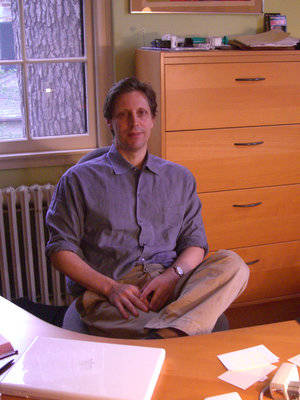Why AI Art Is Not Art
Author and anesthesiologist Ronald W. Dworkin reaches back to Tolstoy to explainIn a recent article, anaesthesiologist Ronald W. Dworkin, author of Medical Catastrophe: Confessions of an Anesthesiologist (2017), outlined his concerns about what the public is told to believe about AI. Careless use of language, for example, confuses what AI is doing. One illustration he offers is art:
Professors at Rutgers University have built a machine that autonomously produces “art” using an algorithm called AICAN. The machine incorporates existing styles to generate images on its own. Project director Ahmed Elgammal writes: “People genuinely like AICAN’s work, and can’t distinguish it from that of human artists.” But this is not art. In his essay, “What is Art?”, novelist Leo Tolstoy says art is a human activity whereby people, by means of a medium, hand on to other people feelings they have lived through, such that other people are infected by those feelings and experience them. Art is a means of union among people’s minds. Art is a means of union among people’s minds. By definition, AICAN’s work is not art because it has no feelings that it has lived through to communicate. It has no feelings at all. It has no mind. It produces a counterfeit of art.
Even when AICAN draws images that convey emotion to people, it is still not creating art according to Tolstoy’s definition. To express an emotion and arouse that emotion in another person at the same time is not art. A man laughs and infects others with his good cheer. Another man cries and infects others with his sorrow. Neither of these activities is art, Tolstoy says, for art is more than just transmitting one’s feelings of the moment to another person, immediately and directly. Art demands that a person evoke in his or her mind a previous experience, and then transmit that feeling so that others experience the same feeling. If AICAN fakes a laugh, prompting a viewer to laugh immediately in response, that is not art. Yet this is the highest level that AICAN can attain. AICAN cannot feel something arising from a previous experience and then transmit that feeling to another person, which is necessary for art. In fact, AICAN cannot feel at all.
People “like” AICAN’s work, Elgammal declared. It gives people pleasure. But magic tricks and circuses also give people pleasure, and those are not art, Tolstoy said. On the contrary, the notion that art is whatever causes enjoyment is simply a way of justifying existing art, he concluded…
In The Painted Word, Tom Wolfe criticized modern art, especially abstract art, because much of it communicates so little. It neither touches nor moves people. Using Tolstoy’s definition, much of abstract art fails as art. Although the artists producing abstract art may feel something, many viewers feel nothing. But AI-produced abstract art is worse according to Tolstoy’s definition, for now neither artist nor viewer feels anything.
Ronald W. Dworkin, “Artificial Intelligence: What’s to Fear?” at The American Interest
AICAN (“AI art the people are excited about”) has its supporters, though:
“So why are so many of these images (the full range of which you can see i so alluring? What does it know about me that I don’t? Why do I like them? And why do I feel like this is just the beginning?” – Michael Andor Brodeur, Boston Globe, August 3, 2017
“Now and then, a painter like Claude Monet or Pablo Picasso comes along and turns the art world on its head… But could the next big shake-up be the work of a machine?” – Chris Baraniuk, New Scientist (June 29, 2017)
“The biggest artistic achievement of the year,” René Chun, Artsy (September 21, 2017)
Curiously, most of the publicity material is from 2017, some from 2018. Don’t look now but the trend may be peaking, to judge from the greatly reduced auction price for AI art this year for Memories of Passerby (1):
It hammered to an online bidder at £32,000 ($42,000), according to artnet News, a result that put it on the low end of its pre-sale estimate of £30,000 to £40,000; with fees, the price was £40,000 ($52,634).
The result was a far cry from Christie’s first test of the auction market for AI art last year, when it a sold work by the French collective Obvious for $432,500, or more than 40 times its high estimate of $10,000. The portrait of a non-existent nobleman was generated through a comparison with 15,000 portrait paintings spanning the 14th to the 20th centuries.
Benjamin Sutton, “An artwork created by AI sold for £40,000 at Sotheby’s, failing to generate the fervor that propelled another AI work to sell for 40 times its estimate last year.” at Artsy (March 6, 2019)
The business case for AI art is not especially compelling because there is already a huge consumer art industry catering to every taste in decor. Producing more merely decorative novelty art faster does not create more customers for it. There is an upper limit on the number of interior walls that people think they ought to hang something on. In that respect, AI art differs from, say, construction robots or robotic vacuum cleaners, which could potentially save customers time, labor, or money. There’s always a market for that.
Further reading on AI and art:
Will plausible robots replace movie stars? Adam Nieri: A short film prepares us to think about it
Can predictive text replace writers? A New Yorker staff writer ponders his future and the machine’s.
Fan tries programming AI jazz, gets lots and lots of AI… Jazz is spontaneous, but spontaneous noise is not jazz
AI can’t do jazz because spontaneity is at jazz’s core. AI “artists”—in all the forms presently available — merely replay their programming.
Could AI authentically create anything?
AI creates kitsch, not art
and

